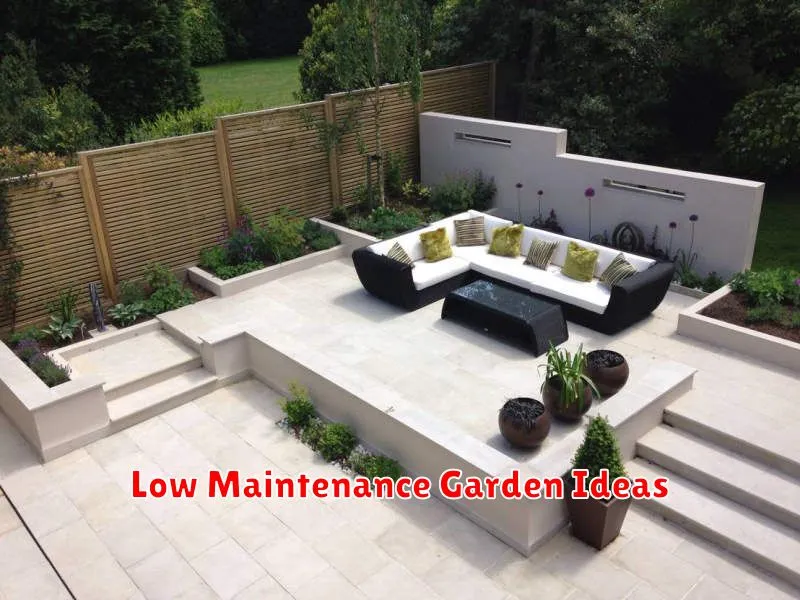Dreaming of a beautiful garden without the endless upkeep? This article provides 5 essential tips for designing a low-maintenance garden that thrives with minimal effort. Learn how to select the right plants, create an effective watering system, and implement smart landscaping techniques to enjoy a stunning outdoor space without sacrificing your precious time. Discover the secrets to a stress-free and beautiful garden, perfect for busy individuals and families alike.
Using Drought-Resistant Plants
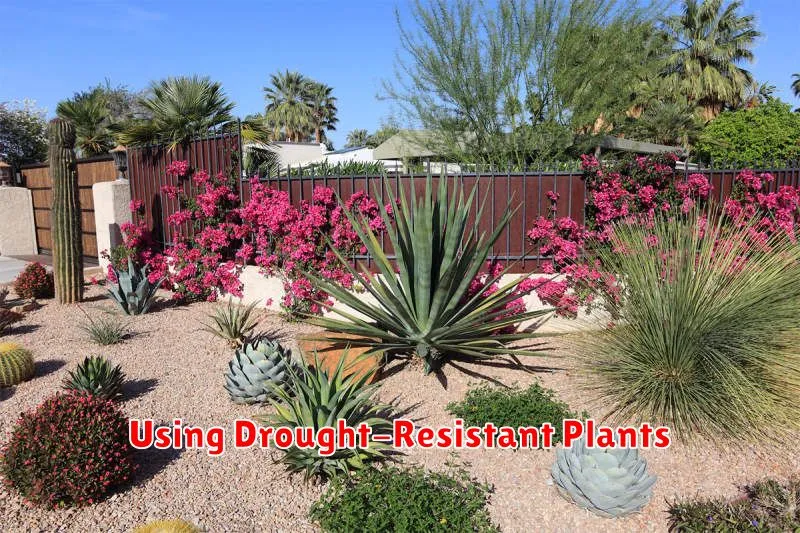
Drought-resistant plants offer a practical and aesthetically pleasing solution for landscaping in arid and semi-arid regions, or for those seeking to conserve water. These plants are naturally adapted to survive with minimal water, reducing the need for frequent irrigation and contributing to water conservation efforts.
Selecting the right drought-tolerant species is crucial for success. Consider your specific climate, soil type, and sunlight exposure when making your choices. Local nurseries can provide valuable advice on plants well-suited to your particular environment. Researching the mature size of each plant is also important to ensure proper spacing and avoid overcrowding.
Proper planting techniques are vital for establishing drought-resistant plants. Amend the soil with organic matter to improve drainage and water retention. Plant at the appropriate depth and spacing, ensuring roots are well-established. A thorough watering after planting helps the roots to develop effectively, even with drought-tolerant varieties. However, avoid overwatering, as this can hinder root development and make plants more susceptible to disease.
Mulching is a highly effective strategy for conserving soil moisture and suppressing weeds. Organic mulches such as shredded bark or compost decompose slowly, adding nutrients to the soil while protecting it from the sun’s heat. Mulch should be applied around the base of plants, leaving a small gap between the mulch and the stem to prevent rot.
While drought-resistant plants require less watering than other plants, they still need occasional irrigation, especially during establishment and extended periods of extreme heat. Deep, infrequent watering encourages deep root growth, enhancing drought tolerance in the long run. Monitor the soil moisture levels and water only when necessary, avoiding frequent shallow watering.
By carefully selecting and implementing appropriate planting and maintenance strategies, homeowners and landscapers can create beautiful and sustainable landscapes utilizing drought-resistant plants. These plants not only reduce water consumption but also contribute to a more environmentally friendly and aesthetically pleasing outdoor space.
Mulching for Weed Control
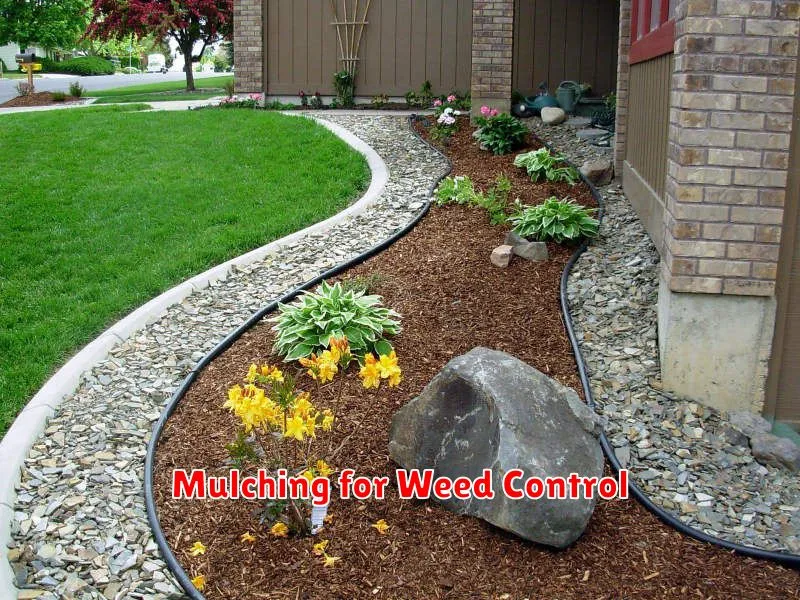
Mulching is a highly effective method for suppressing weed growth in gardens and landscapes. By covering the soil surface with a layer of organic or inorganic material, mulch creates a physical barrier that prevents sunlight from reaching weed seeds, inhibiting germination and growth. This leads to a significant reduction in weed populations, minimizing the need for herbicides and promoting a healthier growing environment for desired plants.
Different types of mulch offer varying levels of weed suppression. Organic mulches, such as wood chips, shredded bark, straw, and compost, decompose over time, enriching the soil with nutrients. Inorganic mulches, like landscape fabric, plastic sheeting, and gravel, provide longer-lasting weed control but do not contribute to soil fertility. The choice of mulch depends on individual preferences, soil type, and the specific needs of the planting area.
Proper application is crucial for effective weed control. The mulch layer should be at least 2-3 inches thick to effectively block sunlight. Applying mulch too thinly may not provide sufficient weed suppression, while applying it too thickly can smother plants or hinder water penetration. It is important to keep the mulch away from the stems of plants to prevent rot and fungal diseases. Regularly replenishing the mulch layer as it decomposes will maintain its effectiveness over time.
Beyond weed suppression, mulching offers numerous benefits. It helps retain soil moisture, reducing the frequency of watering. It also regulates soil temperature, protecting plant roots from extreme heat and cold. Furthermore, mulching reduces soil erosion and improves the overall aesthetic appeal of the garden. For sustainable and efficient weed management, mulching is a valuable and environmentally friendly practice that every gardener should consider.
Automatic Irrigation Systems

Automatic irrigation systems offer a convenient and efficient solution for watering lawns, gardens, and agricultural fields. These systems automate the process of delivering water, eliminating the need for manual watering and resulting in significant time savings and improved water management.
There are various types of automatic irrigation systems available, each suited to different needs and budgets. Sprinkler systems are commonly used for larger areas like lawns and fields, employing rotating sprinklers or pop-up spray heads to distribute water evenly. Drip irrigation systems, on the other hand, deliver water directly to the roots of plants through a network of tubes and emitters, minimizing water waste and maximizing efficiency. Soaker hoses provide a simpler, more affordable option for smaller gardens and flowerbeds.
The components of an automatic irrigation system typically include a water source (usually a municipal water supply or well), a controller (a programmable timer that regulates the system’s operation), valves (to control the flow of water to different zones), pipes and tubing, and the water distribution devices (sprinklers, drip emitters, or soaker hoses). The system’s design and components are tailored to the specific needs of the area being irrigated, considering factors such as size, plant type, soil type, and water availability.
Benefits of using automatic irrigation systems include: consistent and reliable watering, reduced water waste through precise control, improved plant health and growth, increased convenience and time savings, and potential cost savings in the long run due to reduced water consumption. However, considerations such as initial installation costs, maintenance requirements, and potential environmental impacts (e.g., water runoff) should be evaluated before making a decision.
Proper maintenance is crucial for ensuring the longevity and effectiveness of an automatic irrigation system. This includes regular inspections for leaks, clogs, and damaged components; cleaning and flushing the system periodically; and adjusting the watering schedule according to seasonal changes and weather conditions. With proper planning and maintenance, an automatic irrigation system can provide years of reliable and efficient watering service.
Selecting Perennials for Longevity
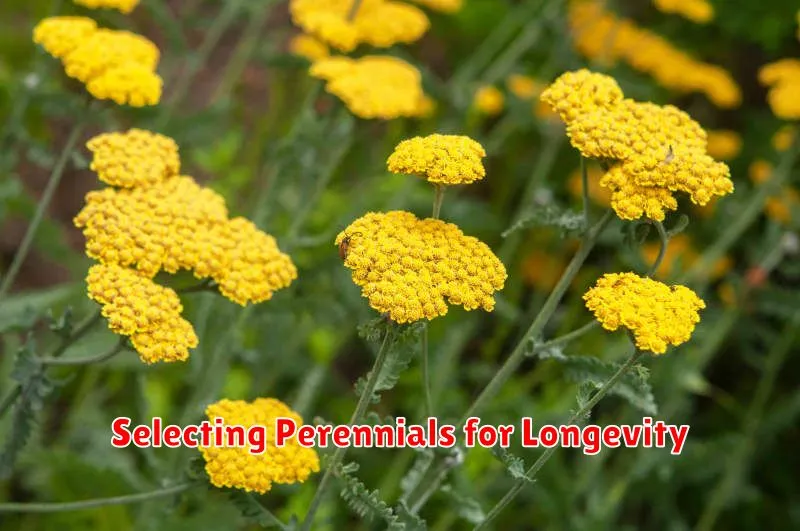
Choosing perennials for your garden requires careful consideration of several factors to ensure long-lasting beauty and minimal maintenance. Longevity, or the plant’s lifespan, is a key characteristic to prioritize. Some perennials are short-lived, lasting only a few years, while others can thrive for decades with proper care.
Site selection plays a crucial role in a perennial’s lifespan. Understanding the plant’s specific needs regarding sunlight, soil type, and moisture levels is vital. Matching the plant’s requirements to the garden’s conditions will significantly impact its longevity. Planting in unsuitable conditions will inevitably shorten its life, regardless of the species’ inherent lifespan.
Plant health is also paramount. Purchasing healthy, disease-free plants from reputable nurseries is essential. Inspecting the plants for signs of pests or diseases before planting can prevent problems later on. Regular maintenance, such as proper watering, fertilization, and deadheading, further contributes to a plant’s overall health and longevity.
The species of perennial chosen also dictates its lifespan. Some species are naturally longer-lived than others. Researching the expected lifespan of specific perennials allows gardeners to make informed decisions, creating a garden with a blend of long- and short-lived plants to ensure continuous bloom throughout the seasons.
Finally, division can extend the life of many perennials. Periodically dividing overcrowded clumps rejuvenates the plants, promoting vigorous growth and extending their life significantly. This simple practice is often overlooked but can drastically increase the longevity of your perennials.
Gravel Pathways for Easy Maintenance
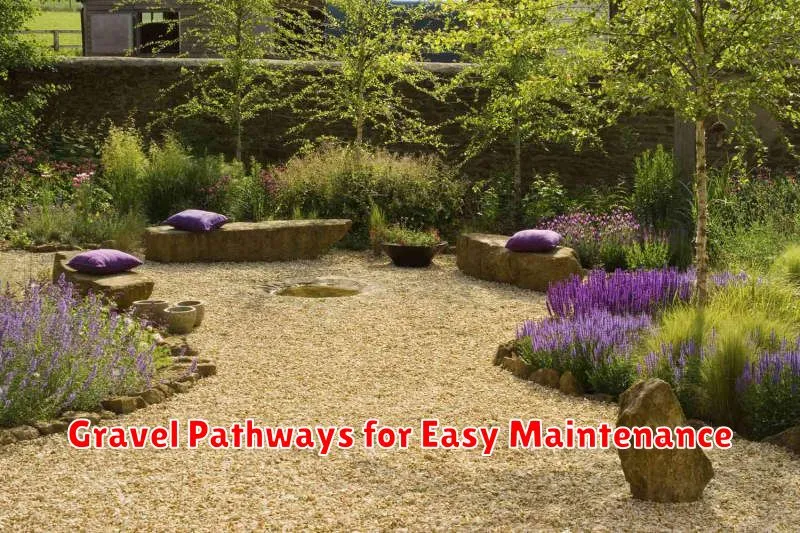
Gravel pathways offer a low-maintenance and aesthetically pleasing alternative to paved walkways. Their natural look complements various landscaping styles, from rustic to modern.
One of the biggest advantages is the ease of maintenance. Unlike paved surfaces prone to cracking and weed growth, gravel pathways require minimal upkeep. Occasional raking to remove leaves and debris is usually sufficient.
Material selection is key. Choosing durable gravel types, such as crushed stone or river rock, ensures longevity. The size and color of the gravel can also be chosen to match your desired aesthetic.
Installation is relatively straightforward, often achievable as a DIY project. However, proper preparation of the base is crucial for preventing settling and ensuring a stable pathway. This may involve laying down a geotextile fabric to prevent weed growth.
Cost-effectiveness is another compelling benefit. Gravel pathways are typically less expensive to install than paved pathways, making them a budget-friendly option for homeowners.
While requiring less maintenance than paved options, periodic upkeep is still recommended. This might include topping up the gravel layer to compensate for settling or addressing any significant weed growth.
Drainage is excellent with gravel pathways, reducing the risk of waterlogging and erosion. This is particularly beneficial in areas with high rainfall.
In conclusion, gravel pathways present a practical and attractive solution for those seeking a low-maintenance yet charming addition to their outdoor space. Their durability, ease of installation, and cost-effectiveness make them a worthwhile consideration.

